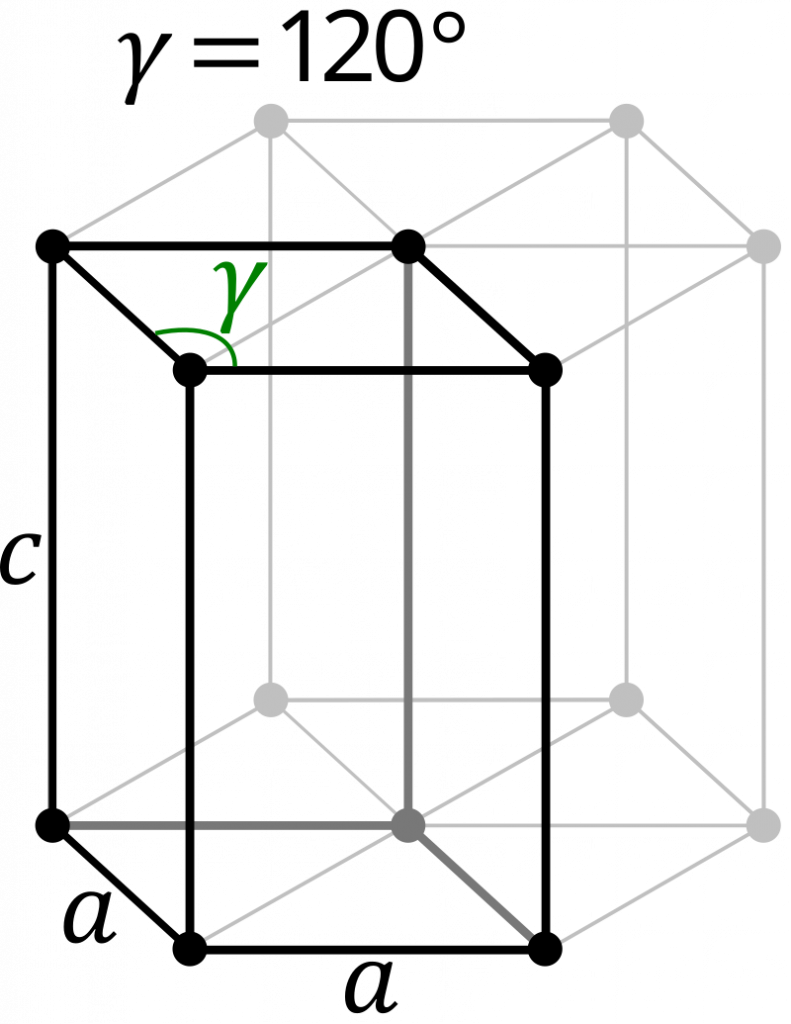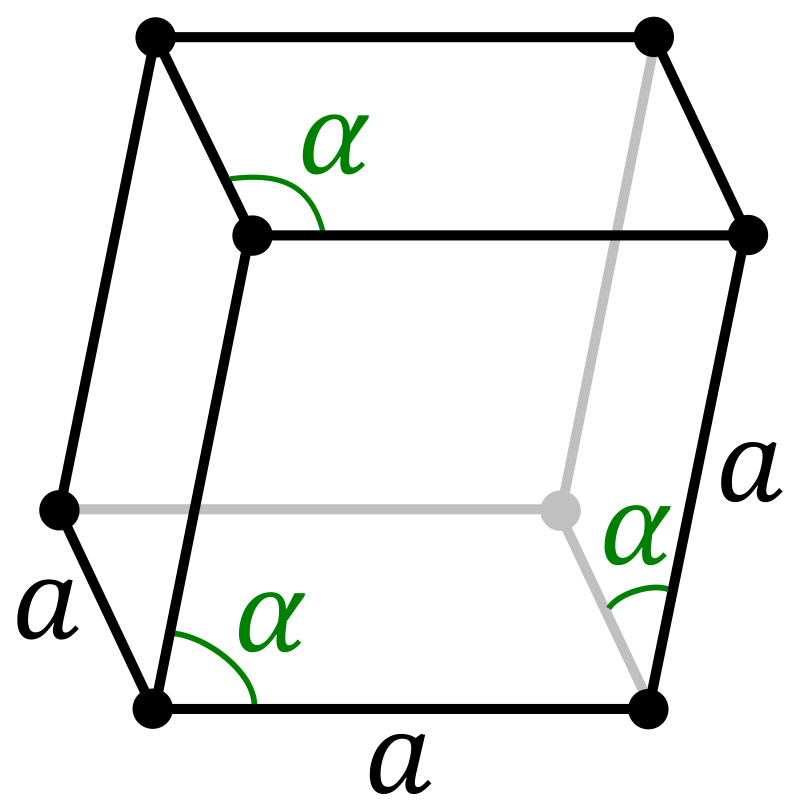Bravais Lattices – The Hexagonal Crystal Family
There is a subtle distinction that is important here. The hexagonal crystal family includes the trigonal crystal system and the hexagonal crystal system. The trigonal crystal system requires a three-fold axis of rotation, while the hexagonal crystal system requires a six-fold axis of rotation. There are two lattices associated with this crystal family. These are the hexagonal lattice and the rhombohedral lattice (shown left to right below).


The trigonal crystal system can adopt either of these lattice types, depending on the exact space group. The hexagonal crystal system only adopts the hexagonal lattice. As with the tetragonal lattice, there are two lattice parameters free to vary. For the conventional unit cell of the hexagonal lattice, this is a and c. For the conventional rhombohedral unit cell this is a and \(\alpha\). The rhombohedral unit cell is a special shape of parallelepiped called a rhombohedron (each face is a rhombus), hence the name.
In fact, hexagonal lattices can be represented in a rhombohedron-shaped unit cell with extra lattice points present. Similarly, the rhombohedral unit cell can be represented in a hexagonal shape with extra lattice points. These conversions are shown here.
It is now also worth considering that each lattice has an infinite number of unit cells associated with it. Obviously the unit cell can simply be doubled in size to produce a new cell, but other unit cells can be made also. This is shown here for a hexagonal lattice.